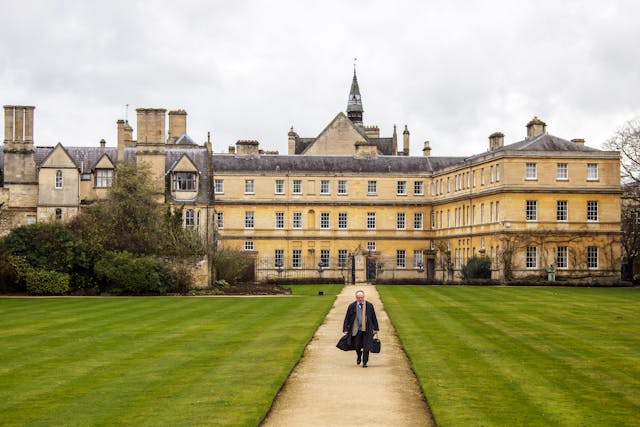
Why do Oxford and Cambridge Universities have so many colleges? Mostly for historical reasons, but it also makes it easier for the students to learn, live, and socialize.
Oxford University and Cambridge University have 75 colleges between them. 44 at Oxford and 31 at Cambridge. When someone applies to either university, they have to apply to a specific college and not the university as a whole. Each college is a self-contained unit, but there are also facilities that are shared across the whole university. A college provides accommodation for the students, they are a complete community where students can socialize with other students, they have academic support, they have libraries, music rooms, lecture theaters, sports facilities, and offices. They have between 300 and 500 students, usually, and the students are spread across all grades and across all subjects. The colleges all share the major libraries, classrooms, larger lecture halls, science labs, and other academic facilities. Each college will have its own clubs and circles, as well as its own traditions and architectural style. It can be quite hard to choose the college to apply to. Unless you are not academically gifted enough to apply to those colleges in the first place, like yours truly.
So, how did they end up with so many colleges in the first place? It all comes down to how the university was founded and how it was funded. The University of Oxford doesn’t have an official foundation date, but it is thought that teaching was happening there by 1096. The word “university” didn’t exist at that time and there was no concept of different levels of education either. The University of Cambridge was founded in 1209, but just as with the University of Oxford, teaching was already happening before it was founded. All education in Europe was carried out by churches before the university system was settled. There was definitely a center of education in Oxford that rivalled any in Europe from 1167 because students started returning from the University of Paris to study at Oxford. Around about this time, the masters that ran the school, basically the teachers, became known as “universitas magistrorum et scholarium” (community of masters and scholars), which is where the word university came from. Then, in 1209, there were a few problems at Oxford. Three scholars were hanged by the town in relation to the death of a woman. The King was also trying to control the university more, and several masters left and went to Cambridge, where they started the university.
Up to the middle of the 13th century, universities were just areas of learning. They were divided by class, or by the location of the students, but they were not divided into colleges. That begins in 1249 in Oxford and 1284 in Cambridge. Most education outside of the universities was provided by the church and after the universities were set up, the church wanted to gain influence. Different monastic orders, such as the Dominicans and the Augustinians, set up in town and they built halls that the students could live in. They wanted to get as much influence as they could. These weren’t colleges, but they did start to separate students into groups.
In 1249, William of Durham, an English nobleman, left £200 in his will to the University of Oxford. That is £287,000 ($363,000) in today’s money. All of the students that attended the university at the time were wealthy. The monasteries gave them halls to live in, but they had to pay. William of Durham had studied at the University of Paris and they had a system of colleges that allocated money to students who couldn’t afford to study. William of Durham wanted to start something similar and so he bequeathed his money. He only asked that the students the money supported were there to study theology. The university ended up losing half of the money and it took them 30 years, but they finally set up the system and University College became the first of the 75 colleges at Oxford and Cambridge. By the end of the 1200s, Oxford had three colleges and Cambridge had one.
Over the following centuries, the number of colleges grew. Some of them were started for the noble reason of helping people who couldn’t afford to study. Some of them were for the purpose of trying to gain more influence and control over the university. And some of them were simply a way for very wealthy people to put their name on something that would be around long after they were. The colleges have wisely invested these endowments over the centuries and today, together, they are worth several billion dollars. And this is what I learned today.
Sources
https://www.topuniversities.com/where-to-study/europe/united-kingdom/oxbridge-explained
https://www.linkedin.com/pulse/why-do-oxford-cambridge-have-colleges-how-work
https://en.wikipedia.org/wiki/University_of_Oxford
https://en.wikipedia.org/wiki/John_I_de_Balliol
https://en.wikipedia.org/wiki/William_of_Durham
https://www.etymonline.com/word/university
https://en.wikipedia.org/wiki/University_of_Cambridge
https://www.bankofengland.co.uk/monetary-policy/inflation/inflation-calculator
Photo by Sergey Guk: https://www.pexels.com/photo/historic-oxford-college-building-with-garden-path-28448938/

Pingback: Why does the bystander effect happen?